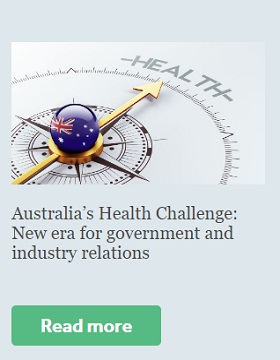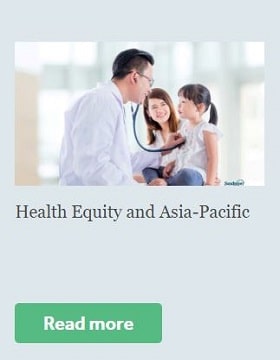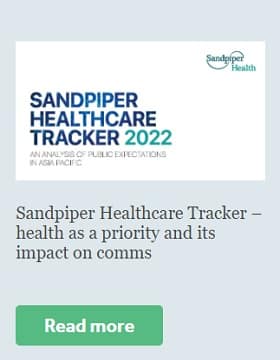
Now Is the Time for Agriculture PR

Winning PR Strategies in China for Financial Firms
Robert Magyar, Managing Director, Sandpiper Health Talks to Telum
September 2022

Telum got the chance to speak with Robert Magyar, who recently has been appointed as the Managing Director of Sandpiper Health, overseeing the regional specialist team of healthcare comms and public affairs advisors based in Australia, China, Hong Kong, New Zealand and Singapore. Robert speaks about his experience, trends and sectors he focuses on, and tips to success in the healthcare communications industry.
Q: You have just joined Sandpiper Health as Managing Director. How are you enjoying the role so far?
A: This new role is a culmination of a great deal of work in the past two decades. I started working in healthcare communications about 17 years ago in Japan. From that point on, healthcare policy research and analysis, government relations and public affairs, and media relations occupied a major portion of my career.
In 2011, when John Russell and I launched North Head, healthcare related work was one of the main sectors that we built our consultancy work around. Last year, when the discussion for a merger with Sandpiper became serious, it was clear that strengthening the healthcare policy, public affairs, and corporate communications work across the region is an important element of merger considerations. That is the reason why Sandpiper Health was launched earlier this year, and I am very proud to lead the exceptional group of consultants across the six offices of Sandpiper.
Q: You have worked in healthcare communications for two decades – what are some of the differences in healthcare advocacy across the APAC region?
A: I always say that the concept of communications is pretty much the same across all markets. However, the way we go about this is influenced by a number of factors.
First, we have to understand the environment around us and, specifically, the issue environment around the specific topic we are working on. In a highly technical and regulated sector such as healthcare, this means that an agency must have specialist consultants, who follow these issues and work on them consistently. This type of knowledge cannot be acquired after a few hours of research: you have to talk the talk and walk the walk.
Second, the manner to approach reporters, experts, government officials, patient groups, and caregivers varies greatly from market to market. We don’t need to have the contact number of all important reporters, academics, or officials in our phones, but we must understand the most effective way to reach stakeholders, so that we can work effectively and we can propose actions to our clients that we know we can deliver.
In some markets, it takes more time and effort to reach a popular reporter than in others; in some markets, it is impossible to get in front of a certain level of officials if you don’t have the right kind of information. When good content is married with the right process, success is almost inevitable. Of course, there are external factors we cannot control: reporters come and go; government policy can change due to factors that are outside of the most thorough planning; and sometimes the news cycle is hijacked by unforeseen events. But a well-prepared team can always correct its course and find a way to maximise results.
Q: The healthcare industry features a great deal of technical jargon. How do you shape your messaging to audiences who aren’t trained in these industries?
A: Sectors that are complex scientifically, technically, and legally all face this issue. The only way to deal with this is to have very targeted messaging to all stakeholders. This means that we often prepare three or four different documents of the same topic, based on the audiences. Healthcare providers and academics will understand a deeper technical document, and specialist reporters might understand a similar level of detail too. However, government officials often focus more on the economic costs and benefits of a healthcare issue. While patients and caregivers, of course, focus on the personal level of information. This is why healthcare communications is a discipline in itself – and also why properly resourcing any healthcare related campaigns is very important.
Q: What trends or sectors are you focusing on for the remainder of 2022?
A: Fortunately, there is no lack of new trends in healthcare – more broadly, in life sciences. The large interest in public health that started with COVID in 2020 doesn’t seem to go away anytime soon, and this creates a great deal of opportunities for companies to engage in thoughtful communications about the importance of healthcare. New research and therapies also create a lot of buzz and interest, such as cell and gene therapy, the role of artificial intelligence in research, and the online marketplace for pharmaceuticals and medical devices. Additionally, the interlocking issue areas of fertility, population decline, and aged care are presenting many business and communications opportunities for specialist companies. These are some of the most important trends Sandpiper Health is focusing on.
However, if I broaden the scope of our discussion to nutrition, bio-agriculture, and animal health, which all affect human healthcare, the number of rising issues becomes so large that one can plan several lifetimes of work around them.
Q: What are your top three tips to success in the healthcare communications industry?
A: I don’t think my answers will be a surprise:
- Know your content and be prepared.
- Be diligent and consistent – your peers in the healthcare sector (patient advocates, doctors, scientists, reporters) all work very hard, we have to do the same
- Be human, especially when issues and problems arise; your clients and other stakeholders are also human beings and in a crisis, the best way to resolve an issue is to find our common humanity and work together as a team.
This article was originally published on Telum Media on 21/07/2022.
To find out more about developing effective communications strategies to engage and educate patients, contact the team at Sandpiper Health. We work right across the Asia-Pacific and our team has in-depth insights into the health and communication challenges facing the industry right across the region.
You may also like:




